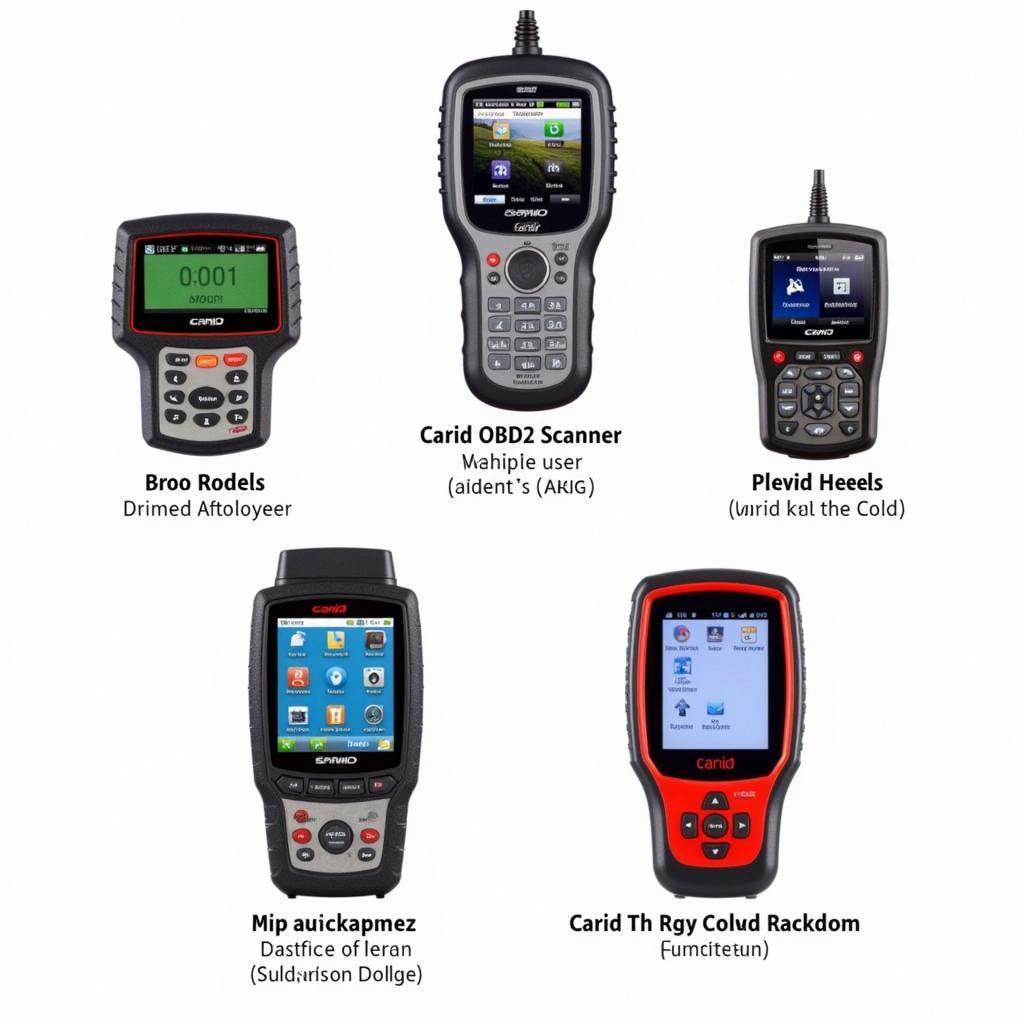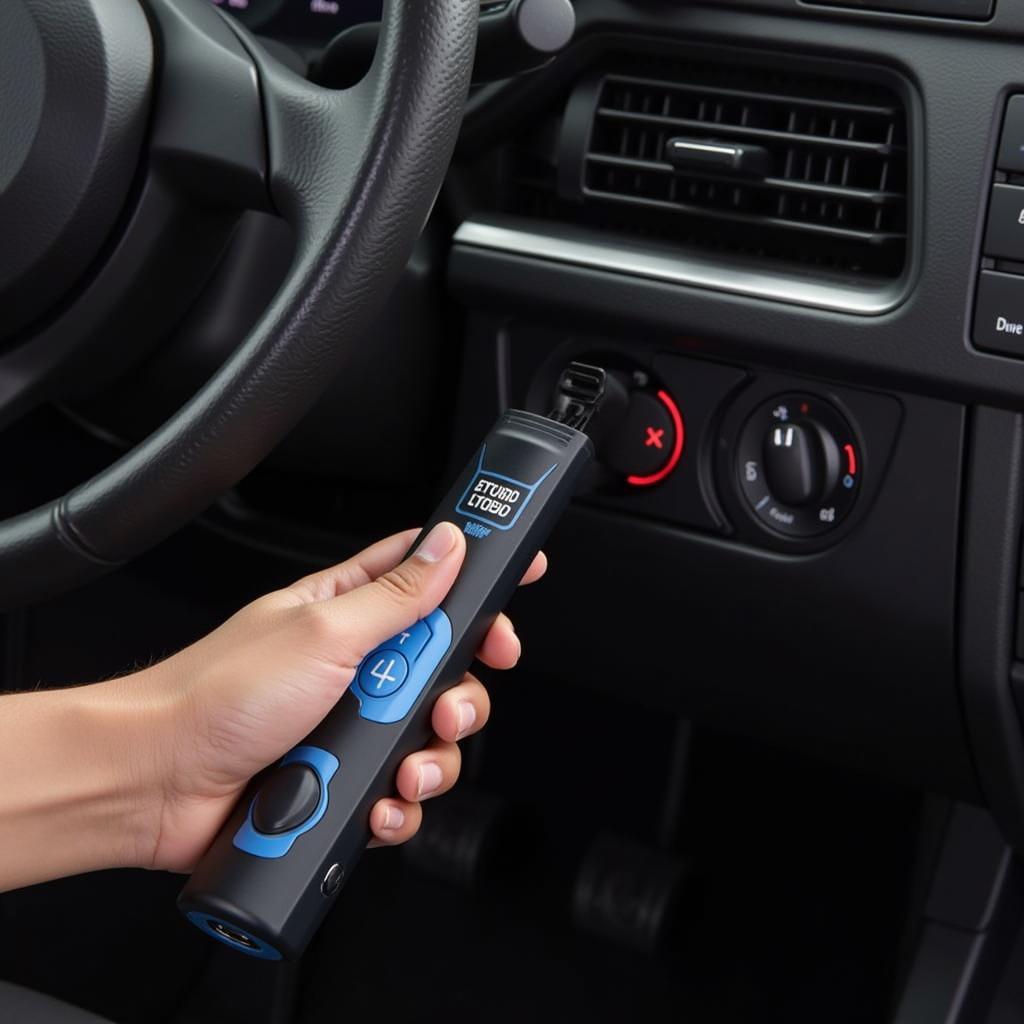The automotive industry is no stranger to innovation, constantly evolving to improve performance, efficiency, and safety. One such innovation making waves is the use of 3D scanners for cars. This technology, once confined to high-end design studios and manufacturing plants, is becoming increasingly accessible to a wider range of users, including repair shops, restoration experts, and even car enthusiasts. But what exactly are 3D scanners, and how are they changing the automotive landscape?
Understanding 3D Scanning Technology and its Applications
A 3d Scanner For Cars works by projecting a pattern of light onto the vehicle’s surface and capturing the reflections with high-resolution cameras. This data is then processed by sophisticated software to create an accurate, three-dimensional representation of the car or its components. The level of detail captured is remarkable, often down to the sub-millimeter level, allowing for precise measurements, analysis, and even reverse engineering.
This technology has opened up a world of possibilities in various automotive sectors:
- Collision Repair: Assessing damage extent, creating custom repair plans, and ensuring accurate part replacement.
- Restoration Projects: Digitally preserving classic car designs, recreating obsolete parts, and ensuring authenticity.
- Performance Tuning: Analyzing aerodynamics, optimizing vehicle geometry for improved handling and speed.
- Customization and Aftermarket Modifications: Designing and fitting bespoke body kits, spoilers, and other accessories with perfect alignment.
- Accident Reconstruction: Generating precise 3D models of accident scenes to aid in investigations and insurance claims.
Benefits of Using a 3D Scanner for Cars
The adoption of 3D scanning technology brings significant advantages over traditional methods:
- Unmatched Accuracy: Eliminates human error in measurements, ensuring precise part fabrication and fitment.
- Time Savings: Significantly reduces the time spent on manual measurements and adjustments, streamlining the repair or design process.
- Cost-Effectiveness: Minimizes material waste and rework due to inaccurate measurements, ultimately saving costs.
- Enhanced Documentation: Creates digital records of vehicle conditions, facilitating communication and transparency throughout the repair or customization process.
- Increased Safety: Allows for accurate damage assessment and repair, ensuring the vehicle’s structural integrity and safety are not compromised.
“Incorporating 3D scanning into our workflow has been a game-changer,” says John Miller, lead mechanic at Miller’s Auto Repair. “The level of detail we capture allows us to deliver superior repairs, reduce turnaround times, and provide our customers with a higher level of service.”
[scanner used for formula one racing car design]
Choosing the Right 3D Scanner for Your Needs
The market offers a wide array of 3D scanners for cars, each with varying capabilities and price points. When choosing a scanner, it’s crucial to consider factors like:
- Accuracy and Resolution: Determine the level of detail required for your specific applications.
- Scanning Range: Ensure the scanner can handle the size and complexity of the vehicles you work with.
- Portability and Ease of Use: Consider the scanner’s size, weight, and user interface for optimal convenience.
- Software Compatibility: Check if the scanner’s software integrates seamlessly with your existing design or repair tools.
- Budget: Evaluate the scanner’s features and performance against your budget constraints.
Investing in the right 3D scanner for your needs can significantly enhance your capabilities, whether you’re a seasoned professional or an automotive enthusiast looking to take your projects to the next level.
[car with some kind of scanner on trunk]
The Future of 3D Scanning in the Automotive Industry
As technology advances, 3D scanning is poised to play an even more integral role in the automotive industry. We can expect to see:
- Increased Integration: Seamless integration with other automotive technologies, such as augmented reality (AR) and virtual reality (VR) for enhanced design visualization and repair guidance.
- Advanced Automation: Development of robotic 3D scanning systems for faster and more efficient data capture in manufacturing and inspection processes.
- Widespread Adoption: Greater accessibility and affordability, making 3D scanning a standard tool in automotive repair shops and design studios of all sizes.
[3d scan tools]
Conclusion
The integration of 3D scanners for cars marks a significant leap forward in the automotive industry. This innovative technology empowers professionals and enthusiasts alike to achieve unparalleled accuracy, efficiency, and creativity in design, repair, and customization. As 3D scanning continues to evolve, it promises to revolutionize the way we interact with and experience automobiles, ushering in a new era of automotive excellence.
For expert guidance on choosing the right 3D scanning solution for your specific automotive needs, contact ScanToolUS at +1 (641) 206-8880 or visit our office at 1615 S Laramie Ave, Cicero, IL 60804, USA.


